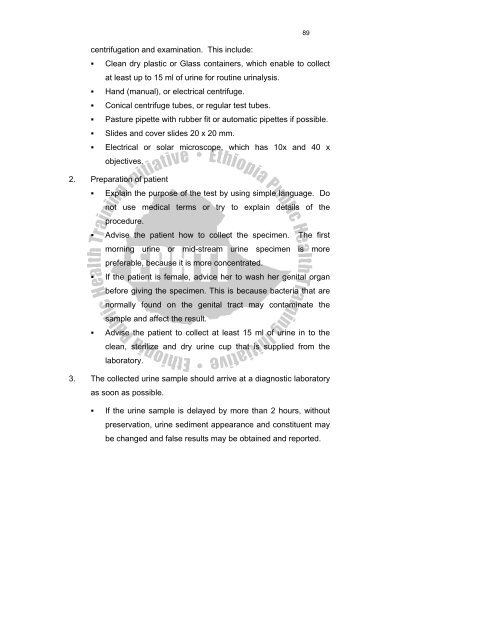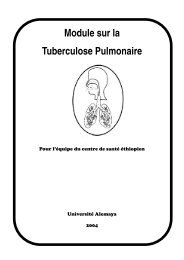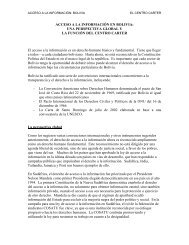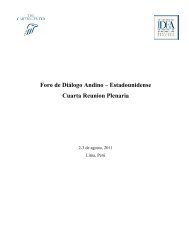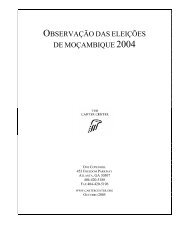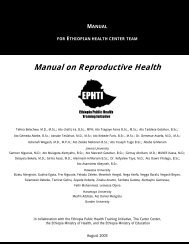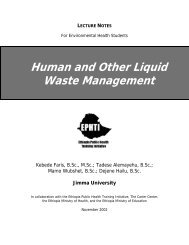Urinalysis - The Carter Center
Urinalysis - The Carter Center
Urinalysis - The Carter Center
Create successful ePaper yourself
Turn your PDF publications into a flip-book with our unique Google optimized e-Paper software.
centrifugation and examination. This include:<br />
• Clean dry plastic or Glass containers, which enable to collect<br />
at least up to 15 ml of urine for routine urinalysis.<br />
• Hand (manual), or electrical centrifuge.<br />
• Conical centrifuge tubes, or regular test tubes.<br />
• Pasture pipette with rubber fit or automatic pipettes if possible.<br />
• Slides and cover slides 20 x 20 mm.<br />
• Electrical or solar microscope, which has 10x and 40 x<br />
objectives.<br />
2. Preparation of patient<br />
• Explain the purpose of the test by using simple language. Do<br />
not use medical terms or try to explain details of the<br />
procedure.<br />
• Advise the patient how to collect the specimen. <strong>The</strong> first<br />
morning urine or mid-stream urine specimen is more<br />
preferable, because it is more concentrated.<br />
• If the patient is female, advice her to wash her genital organ<br />
before giving the specimen. This is because bacteria that are<br />
normally found on the genital tract may contaminate the<br />
sample and affect the result.<br />
• Advise the patient to collect at least 15 ml of urine in to the<br />
clean, sterilize and dry urine cup that is supplied from the<br />
laboratory.<br />
3. <strong>The</strong> collected urine sample should arrive at a diagnostic laboratory<br />
as soon as possible.<br />
• If the urine sample is delayed by more than 2 hours, without<br />
preservation, urine sediment appearance and constituent may<br />
be changed and false results may be obtained and reported.<br />
89


